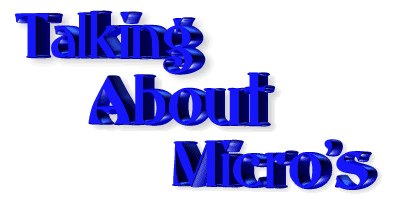|
|
Chapter 2a
State Machine
What is a STATE MACHINE and do we
need to learn about it?
Before we get into our simple method of programming a microcontroller,
we will look at the term: STATE MACHINE and see if it is
something FANTASTIC that we should cover.
Learning about a "MACHINE that has STATES" also involves learning about FLOW DIAGRAMS
and both of these are a way to break a
complex task into simple sections before you start to program.
The only problem is this:
They both involve new terms and terminology such as drawing diagrams
with squares and rectangles and diamonds and words such as STATE and
EVENT.
In our method of "cut-and-paste" programming you are creating a linear
program where the micro advances down the program and carries out an
operation according to the instruction it is presently interpreting.
In fact, you are producing a FLOW DIAGRAM without using any of the
technical terminology and creating a STATE MACHINE without even
realising.
Thus you are not missing out on any BRILLIANT STRATEGY or CLEVER
PROGRAMMING TRICKS.
The only BRILLIANT and CLEVER programming comes from some of the wizards
of programming in the form of sub-routines to MULTIPLY and DIVIDE and
these are contained in our library of sub-routines.
To show you are not missing out on anything, here is an article on STATE
MACHINE:
|
One common way of conquering difficult software design problems
is to use a STATE MACHINE. First you figure out all the states
the software can be in. Then you determine all the inputs to the
state machine—all the events that can cause the state machine to
take some action or to change states. Finally you determine the
state machine outputs—all the actions that the state machine can
perform. |
Introducing STATE MACHINE just produces more complexity to a
discussion but you will learn lots of new and complex words.
However, we are here to keep things simple - not to show how complex we can
get.
|
(C) 2003 Hank Wallace |
In our programming, we show how to deal with a complex problem by simply
looking at each requirement as the micro advances down the program and
dealing with the condition by going to a sub-routine.
This simplifies everything so you don't need to draw-up complex
diagrams or learn anything else.
There is more than one way to KILL A CAT, than CHOKING IT WITH BUTTER.
12/06/14
